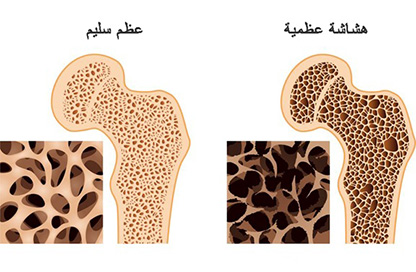Osteoporosis is a health condition that weakens bones, making them brittle and more likely to fracture. It develops slowly over several years and is often diagnosed spontaneously when a fracture occurs due to relatively mild trauma.
The most common injuries in people with osteoporosis are:
• Broken wrist
• Hip fracture
• Fracture of the spine
Fractures can also occur in other bones, and sometimes a cough or sneeze can cause a broken rib or a partial collapse of a bone in the spine.
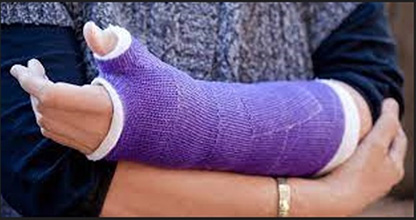
Osteoarthritis is not usually painful, but broken vertebrae are a common cause of long-term pain.
Although a broken bone is often the first sign of osteoporosis, older adults develop a distinctive hunched (humpback) posture. It occurs when the fragile bones of the spine gradually and spontaneously break, making it difficult to bear body weight.
Osteoporosis can be treated with bone-strengthening medications.
Bone loss before osteoporosis (osteopenia)
The previous stage of osteoporosis is called osteopenia. This occurs when a bone density test shows that the bone density is below average for the patient’s age, but not low enough to be classified as osteoporosis.
Osteopenia does not always lead to osteoporosis. This depends on many factors.
There are steps you can take to keep your bones healthy and reduce your risk of osteoporosis.
A doctor may prescribe a bone-strengthening treatment for people with osteoporosis, depending on how weak the bones are and the risk of fracture.
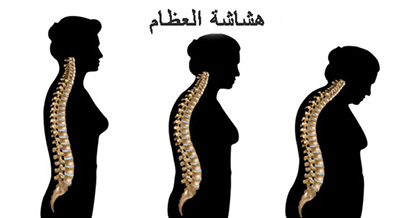
Causes of Osteoporosis
Bone loss is a normal part of aging, but in some people, bone is lost faster than usual. This can lead to osteoporosis and an increased risk of broken bones.
Women lose bone rapidly in the first few years after menopause. Women are more likely to develop osteoporosis than men, especially if menstruation begins (before age 45) or if the ovaries are removed.
However, osteoporosis can also affect younger men, women, and children.
Many other factors can also increase your risk of developing osteoporosis, including:
• Taking steroids in high doses for more than 3 months
• Other medical conditions – such as inflammatory conditions, hormonal disorders, malabsorption, and metabolic problems
• Having a family history of osteoporosis – especially a hip fracture in one of the parents
• Long-term use of certain medications that can affect bone strength or hormone levels, such as anti-estrogens that many women take after breast cancer
• Having an eating disorder such as anorexia or bulimia
• Low body mass index (BMI)
• Not exercising regularly
• Excessive drinking and smoking

Diagnosing osteoporosis
In addition to the clinical examination, it is possible to perform:
- • DEXA bone density scan
- • Bone density is compared with that of healthy young adults.
- • The difference is calculated as the standard deviation (SD) and is called the T. score
- • Less than -2.5 is defined as osteoporosis
Risk factors
Many hormones in the body affect bone metabolism.
Hormone-related disorders that can lead to osteoporosis include:
• Hyperthyroidism
• Decreased amounts of sex hormones (estrogen and testosterone)
• Pituitary disorders
• Overactive parathyroid glands
Other factors that are thought to increase the risk of osteoporosis and broken bones include:
• Having a family history of osteoporosis
• Parental history of hip fracture
• A body mass index (BMI) of 19 or less
• Long-term use of high doses of steroids, which are widely used for health conditions such as arthritis and asthma
• Having an eating disorder, such as anorexia or bulimia
• Excessive alcohol and smoking
• Rheumatoid arthritis
• Malabsorption problems such as Crohn’s disease
• Some medicines used in the treatment of breast cancer and prostate cancer that affect hormone levels
• Prolonged periods of lying down, such as prolonged bed rest
Osteoporosis treatment
Although the diagnosis of osteoporosis is based on the results of a bone density test, the treatment decision depends on several factors:
• Age
• Gender
• Risk of fracture
• History of osteoporosis previous injury
• If the patient has been diagnosed with osteoporosis due to a broken bone, he should receive treatment to try to reduce his risk of further fractures.
• Getting enough calcium and vitamin D.
• Several different medications are used to treat osteoporosis.
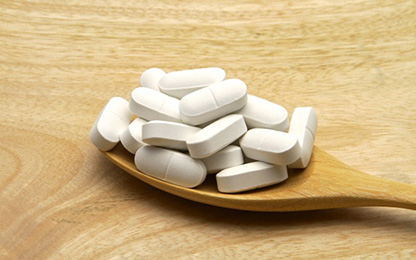
Bisphosphonates
Bisphosphonates slow the rate at which bones break down. It maintains bone density and reduces the risk of fracture.
Different types of bisphosphonates:
• Alendronic acid
• Ibandronic acid
• Risedronate
• Zoledronic acid
They are prescribed as pills or as an injection.
Always take bisphosphonates on an empty stomach with a full glass of water. Stand or sit upright for 30 minutes after taking it. Wait between 30 minutes and two hours before eating or drinking any other fluids.
Bisphosphonates usually take 6 to 12 months to work, and they should be taken for 5 years or longer.
Calcium and vitamin D supplements are also prescribed to be taken at a different time than with bisphosphonates.
The main side effects associated with bisphosphonates include:
• Irritation in the digestive tract
• problems swallowing
• stomach pain
Jaw necrosis is a rare side effect associated with bisphosphonate use, although it is most often given in high doses intravenously to treat cancer rather than osteoporosis.
In osteonecrosis, cells in the jawbone die, which can lead to healing problems. If a patient has a history of dental problems, they may need a medical examination before starting treatment with bisphosphonates.
Selective Oestrogen receptor modulators (SERMs)
SERMs are drugs that have a similar effect on bones as estrogen. They help maintain bone density and reduce the risk of fractures, especially in the spine.
Raloxifene is the only type of SERM available to treat osteoporosis. It is only recommended for women after menopause. It is taken as a daily pill.
Side effects associated with raloxifene include:
• Hot flashes
• Leg cramps
• Possible increased risk of blood clots
Parathyroid hormone
Parathyroid hormone is produced naturally in the body. Regulates the amount of calcium in the bones.
Parathyroid hormone treatments (such as Teriparatide) are used to stimulate the cells that make new bone. You take it as an injection once a day.
While other medications can only slow the rate of osteoporosis, the parathyroid hormone can increase bone density. However, it is only used in a small number of people whose bone density is very low and when other treatments haven’t helped.
Nausea, headache, and dizziness are common side effects of treatment.
Biological medicines
Biological medicines are made from proteins or other substances produced by the body.
Biological medicines that can be used to treat osteoporosis include Denosumab and Romusuzumab. They may be recommended if the patient cannot take other medications such as bisphosphonates, or if he or she suffers from severe osteoporosis.
They work by slowing the rate at which bone tissue is broken down and by speeding up the rate at which bone cells are built. They are given by injection every month or every few months.
Common side effects include muscle or joint pain, rash, constipation, and cold-like symptoms.
Calcium and vitamin D supplements
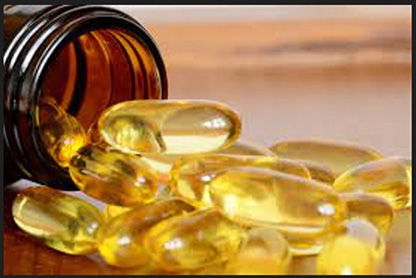
Calcium is the main mineral found in bones, and getting enough calcium as part of a healthy, balanced diet is important for maintaining bone health.
For most healthy adults, the recommended amount of calcium is 700 mg of calcium per day, which most people should be able to get from a varied diet that contains good sources of calcium.
However, the disease may need more calcium, usually as a supplement.
Vitamin D helps the body absorb calcium. All adults should get 10 micrograms of vitamin D daily.
From late March or early April until the end of September, most people should be able to expose their skin to sunlight to activate the pro-vitamin D in their body and convert it into effective vitamin D.
Because it’s difficult to get enough vitamin D from food alone, everyone (including pregnant and breastfeeding women) should take a daily supplement containing 10 micrograms of vitamin D during the fall and winter.
HRT hormone replacement therapy
HRT can be taken by women who are going through menopause.
Treatment of broken bones caused by osteoporosis
Having osteoporosis does not mean that the patient will have a fracture.
There are measures you can take to reduce the risk of a fall or fracture.
Fall prevention

Making a few simple changes at home can help reduce your risk of breaking a bone in a fall.
Check for hazards in the home that residents can trip over, such as wires. Ensure that the rugs are securely installed, and rubber rugs are placed next to the sink in the bathroom to prevent slipping.
Have regular vision and hearing tests. Some older adults may need to wear special hip pads to ease the consequences of falls.
Healthy eating and exercise

Regular exercise and a healthy diet are important for everyone, not just people with osteoporosis. Exercise can help prevent many serious conditions, including heart disease and many forms of cancer.
Following a balanced diet that contains all the food groups gives the body the nutrition it needs.
Fracture recovery
Broken bones can take weeks or months to heal. Having osteoporosis does not affect how long it takes. Recovery depends on the type of fracture. Some fractures heal easily, while others may need more intervention.
Some fractures require open reduction surgery.
A hip replacement is often needed after a hip fracture, and some people may lose mobility due to weak bones.
Osteoporosis can cause height loss due to a broken bone in the spine. This means that the spine can no longer support the weight of the body, causing the back to curve.
This is often painful when it occurs, and it also leads to long-term pain.
During the recovery process, the patient may need the help of a physical therapist or physical therapist.
Dealing with pain
Everyone experiences pain differently, so what works for one person may not work for another.
There are different ways to control pain, including:
• Analgesics
• Heat treatment, such as warm baths or hot compresses
• Cold therapy such as cold compresses
• Relax
Prevention of osteoporosis
Regular exercise
Regular exercise is essential. Adults ages 19 to 64 should get at least 2 hours and 30 minutes of moderate-intensity aerobic activity, such as biking or brisk walking, each week.
Weight-bearing and resistance exercises are especially important to improve bone density and help prevent osteoporosis.
In addition to aerobic exercise, adults ages 19 to 64 should do muscle-strengthening activities two or more days a week by training all major muscle groups, including the legs, hips, back, abdomen, chest, arms, and shoulders.
Weight lifting exercises
High-impact weight-bearing exercises, such as running, jumping, dancing, aerobics, and even jumping up and down are considered high-impact exercises.
People over the age of 60 can also benefit from regular weight-bearing exercise. This can include brisk walking.
Resistance exercise
Resistance exercises use muscle strength. The tendons that pull on the bones enhance their strength of the bones. Examples include push-ups, lifting weights, or using weight equipment in the gym.
A healthy, balanced diet is recommended for everyone. It can help prevent many serious health conditions, including heart disease, diabetes, and many forms of cancer, as well as osteoporosis.
Calcium is important for maintaining bone health. Adults need 700 mg per day.
Calcium-rich foods include:

• Green leafy vegetables
• Dried fruit
• Dairy products such as milk and cheese
Vitamin D is important for healthy bones and teeth because it helps absorb calcium. All adults should consume 10 micrograms of vitamin D daily.
Good food sources of vitamin D include:
• Oily fish such as salmon, sardines, and herring
• Red meat
• Liver
• Yolk
• Fortified foods, such as most spreads and some breakfast cereals
• Nutritional supplements
It can be difficult to get enough vitamin D from foods alone. Therefore, you should take a daily supplement containing 10 micrograms of vitamin D.
Stop smoking and alcohol
Other lifestyle factors that can help prevent osteoporosis include sun exposure

